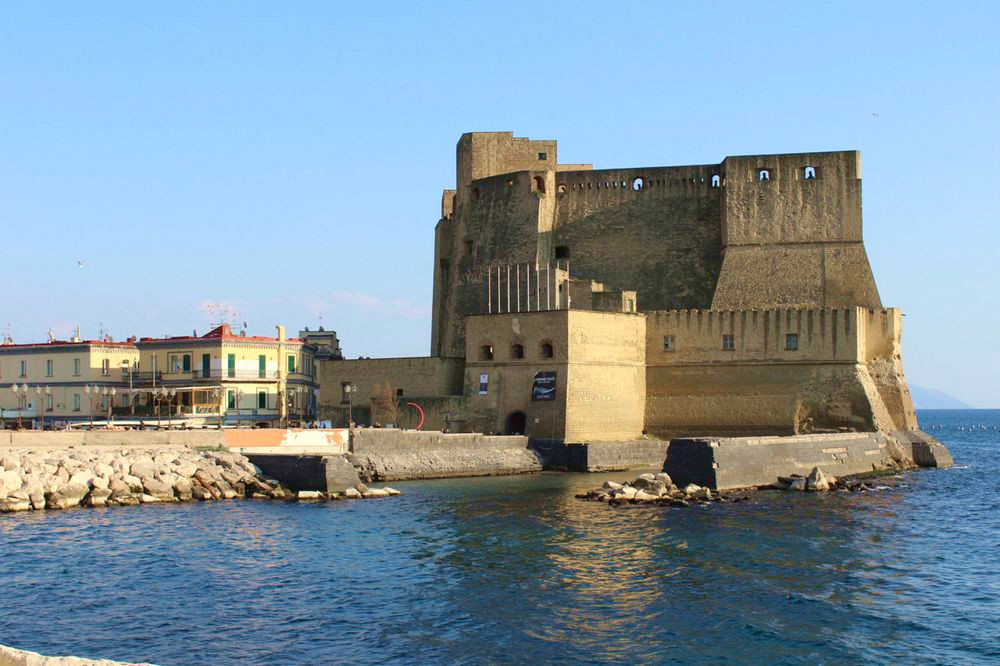History of the City
Naples and Surroundings
Naples has 954 244 inhabitants (2019), is the third Italian city by population and the first by density. The city is the capital of both the homonymous metropolitan city (over 3,115,320 inhabitants) and the Campania region. Naples is located almost in the center of the gulf, a position that allowed for centuries to have a main role in many historical events. The city, in fact, is known around the world for his polyhedral character, partly due to the liveliness of his inhabitants, but above all for inherited influences by the past foreign dominations. In fact, Naples has a rich artistic and architectural heritage, declared in 1995, together with the entire Old Town (the largest in Europe), a UNESCO World Heritage site, in addition with the natural beauty of the Gulf, including the Vesuvius and the islands of Capri, Ischia and Procida.
History
The history of Naples has part origin in myth, which sees the rise of the village in the legendary sea goddess Parthenope, but historically, the Greek from Cumae founded it in the ninth century BCE. His first foundation was named Parthenope, at the point where now stands Castel dell'Ovo (the Megaride Island), but in the eighth century BCE was abandoned in order to be re-established in a new city, precisely Neapolis (which means new city).
Naples became in a short time, thanks to the seaside location and the link with Athens, one of the main centers of Magna Grecia. The town, under the rule of the Roman Republic, was renowned for the beauty of his coasts and luxurious spas, so much, so that became a regular destination for the Roman aristocracy during rest periods and idle, encouraging and increasing a great economic and cultural prosperity.
Naples after the Roman Empire fell and saw a succession of foreign rulers: first as independent Duchy of Byzantium; then under the Normans, who brought the annexation to the Kingdom of Sicily; later with the conquest of Swabian and the ascent to the throne of Emperor Federico II, Naples lived a very flourishing period from the cultural point of view. Following with the Angevin dynasty, the city was developed from the urban point of view, demographic and economic; while with the Aragonese, the metropolis reached one of its highest moments in art and culture. In the following centuries, with the Spanish domination, Naples lived several dark moments: the eruption of Vesuvius in 1631 has seen more than four thousand deaths and the destruction of several countries; in 1647 saw a rebellion of the people led by Masaniello followed by a short period of republican independence; in 1656 the city was affected by a terrible black plague that killed two thirds of the population. Between 1707 and 1734, there was a brief period of Austrian domination, until it became independent Kingdom under the leadership of Charles of Bourbon House. From 1806, there was a brief French domination with Giuseppe Bonaparte placed by his brother Napoleon. The restoration of the Bourbons, the Kingdoms of Naples and Sicily were united under the only throne of the Kingdom of the Two Sicilies and lived a prosperity period with economic development, technological and urban planning; with Garibaldi’s arrival in 1860, the city was annexed to the Kingdom of Piedmont, transformed in 1870 in the Kingdom of Italy, and it was the beginning of Naples’s decline. During the Second World War Naples was the most-bombed Italian city, but also the first in Europe in uprising against Nazi troops without any help from military allies.
Naples is not just history; it is a colorful showcase of culture, art, tradition, music and literature. To remember his song exported all over the world, such as 'O Sole Mio; Funiculi Funicula; Saint Lucia; Come back to Sorrento, and many others, becoming the Italian musical icon par excellence. Not to forget his culinary repertoire: pizza above all, spaghetti, mozzarella etc., they become Italian food icons in the imaginary world.
Topography
Naples is located on north of the homonymous Gulf, at foot of Mount Somma-Vesuvius, bordered on the northwest by the Phlegraean Fields with Monte di Procida at its extremities and at east with Punta Campanella by the Sorrento Peninsula. In the Inland Naples extends from Lago Patria to Nolan territory. While the three islands of Capri, Ischia and Procida are at the extremities of the two peninsulas.
Climate
Naples enjoys a Mediterranean mild clime with cool and wet winters, and the hot summers and moderately dry, although it is usually refreshed by the wind coming from close sea. Just for these climatic conditions, Naples has been a leisure destination since Roman times.
Linguages Spoken
The official language is Italian, but Napoli has his own language: the Neapolitan dialect, declared recently by UNESCO as linguistic heritage to be protected. Therefore, no surprising that there are many foreigners people, who studied Italian, finding difficult to understand Neapolitans.
Religion
Naples has strong ancestry for Christian-Catholic, in fact is among the richest worship cities in the world. In fact, Naples is nicknamed "City of hundred domes".
Street Art
Street art is a constantly growing phenomenon, which street artists create even huge art works for the redevelopment entire neighborhoods. The phenomenon attracts thousands of tourists every year giving new chances to devolve unfortunate places.
What to do
It is definitely an ideal destination for those who love shopping. In fact, Naples offers a wide range of economical possibilities; it has varying prices in each area. You can walk through prestigious boutiques to cheaper stores, or through the popular markets. Renowned shopping streets for the most important Italian brands are via dei Mille, Via Filangieri, Via Calabritto and Via Carlo Poerio. While for cheaper budgets, you find shops in via Toledo and Corso Umberto. Last but not least there are markets in Posillipo for original clothes; Porta Nolana is the old fish market, where you can find from clothing to food to all kind of objects; While the antiques market takes a place in the Riviera di Chiaia, in the municipal park; The last and the most frequented by the Neapolitans, is the Poggioreale market where you can buy anything, but is quite difficult to reach it (we recommend to be accompanied).
About Naples by night, you have a quite large selection. In the historic center it is frequented most of by Neapolitan and foreign students, here you can go eat a Pizza for a very cheap price, or have a drink in one of the most crowded square like Piazza Bellini. However the Riviera di Chiaia is more chic with many cocktails bars. While if you decide for some night club, the Phlegraen peninsula has some really nice one on the coast, with sea front. The variety is not lacking in this city for sure.
While if you are looking for beaches they are a few nearby the city center, the rest are about 40 minutes faraway from Naples, but by car, motobike or train are easily reachable. The nearest one can be found in Posillipo area, Marechiaro is one of these, the same goes for Parco di Gaiola, both are awesome places, and the last has also a protected marine area with submerged archaeological park. More variegated are the beaches of the Sorrento coast, between sandy and rocky, and are located on the bottom of high promontories. While in the Phlegrean cost, Bacoli and Miseno have beaches with fine sand and low seawater. Also very nice is Baia, especially for its protected marine area, here you can appreciate bradyseismic phenomena in the submerged park.
Naples has a long and important history in the art of Presepe (crib). This tradition has remained unchanged for centuries becoming a famous tourist Attraction. Via San Gregorio Armeno, known as the "Alley of the cribs", is the main street with countless workshops dedicated only to this type of work and it is known around the world for manufacture and cribs sale. This street where Christmas seems never ends, master artisans are working all year to make the typical cork cribs. So you can imagine how crowded the place is on Christmas Days, being stormed by both Neapolitans and especially tourists. Here you can really find magic land made of cribs, but also modern statues of famous people like an outdoor wax museum.
Resting Day
Sunday is the resting day, although in tourist places is almost everything fully functional.
Local Holidays
September 19 – Saint Januarius (San Gennaro) Patron of Naples
How to move
Metro: active all week, the opening and closing times vary for each line, but generally they do open from 06:00 a.m. to 09:00 p.m.
Funicular: there are four lines (Chiaia, Montesanto, Central and Mergellina) that allow you to move quickly while avoiding the city traffic.
Bus: are active from 5:30 am until midnight, then they do start working the nightlines every hour generally.
Taxi: Taxis play H24 service and you can conveniently book by telephone.
Walking is the best way to see the city because most of the places to visit are all concentrated in the old city center easily reachable by foot and faster with a tour guide.
Airport: it located only 8 km from the city center, and is easily accessible. ALIBUS line from Piazza Municipio, Piazza Garibaldi and vice versa (the ticket is about € 5). The taxi fare from the airport to Naples Central Station and vice versa is about € 25.































